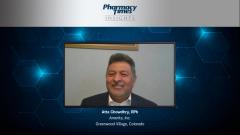
Evolving Treatment Landscape in Hemophilia A
Atta Chowdhry, RPh, shares his final thoughts regarding the trajectory of hemophilia treatment strategies.
Episodes in this series

Atta Chowdhry, RPh: In the last few years, there have been a lot of changes since this bispecific antibody came into the marketplace. It changed the landscape of hemophilia. It changed because, in the past, these inhibitor patients who end up using a lot of factors, there was a big burden on a lot of insurance companies, and there were state programs or vendor programs. Those patients have been switched over to these bispecific antibodies, which were priced in a way that it was not that big of a burden on the system as it was before. And it was really good for these patients. A lot of these types of patients end up being on crutches, being in wheelchairs, and having bleeds pretty much every day or every other day and trying to control it with multiple products but when you have an inhibitor, you cannot keep giving them factor 8, you have to give them a product that is a combination of a lot of different factors in order to throw inhibitors off the track and all that cost of the system went down drastically. And when these gene therapies and other bispecific antibodies and then some extended half-life products come on the market then it will change the marketplace significantly.
In the hemophilia community, patients have been through a lot of stuff. In the 1980s, they went through HIV [human immunodeficiency viruses]. Imagine that you have a vial of a drug in your hand and you're having a bleed and you have to infuse something in order to stop that bleed in your body, but you don't know if the vial contained HIV, which was a death sentence in those days so it was like a rock and hard place. And in the 1990s, a lot of these patients ended up getting HEP-C [chronic hepatitis C], another virus. So, since then, we have a lot of cleaner and better products. But still, the efficacy of these products, safety profile of these products, they had to come out in the market and prove to these patients that they could take care of both aspects of the product, the efficacy and the safety before the patients will be open to embracing those products.
Transcript edited for clarity.
Newsletter
Stay informed on drug updates, treatment guidelines, and pharmacy practice trends—subscribe to Pharmacy Times for weekly clinical insights.












































































































































































































